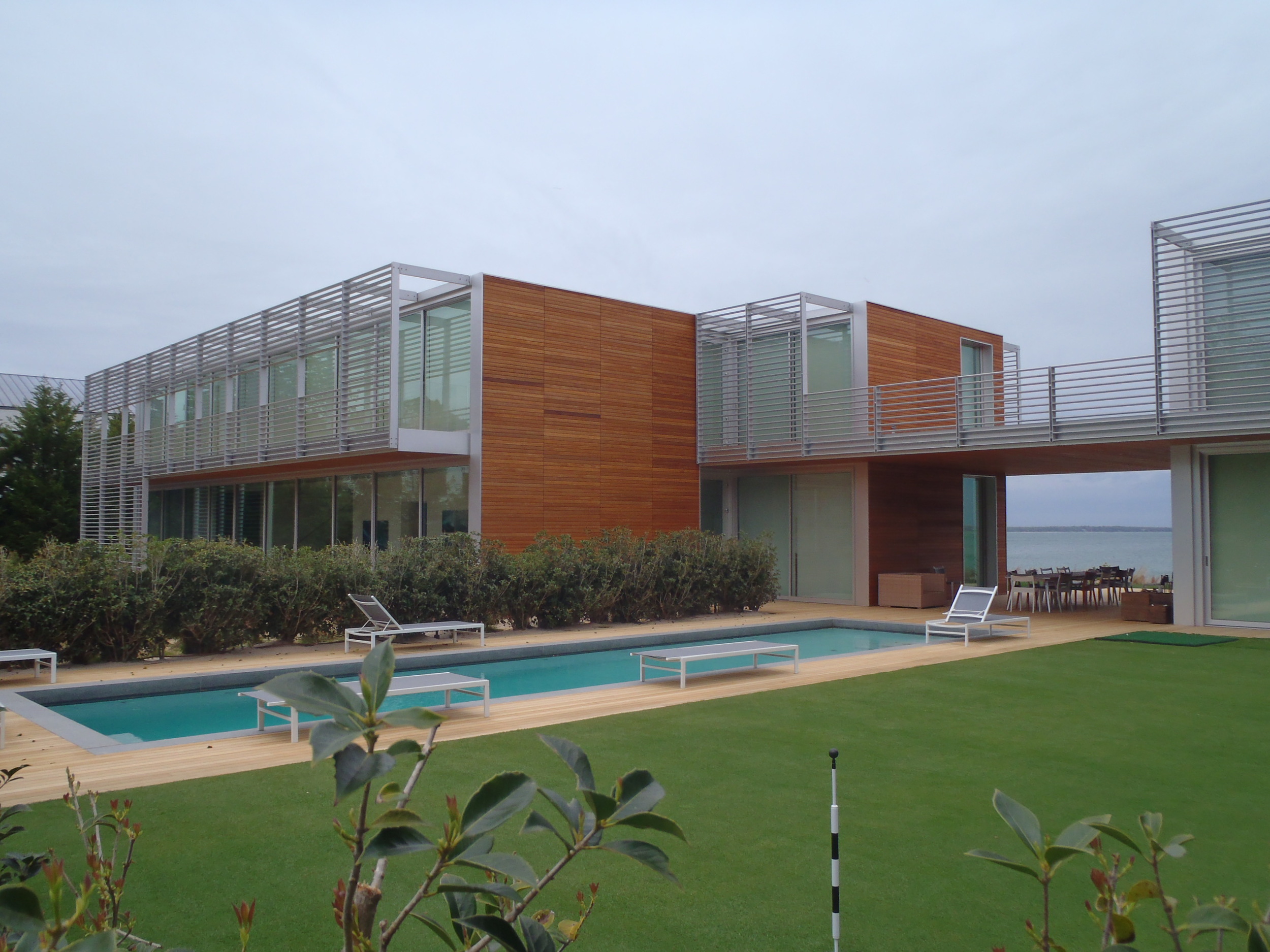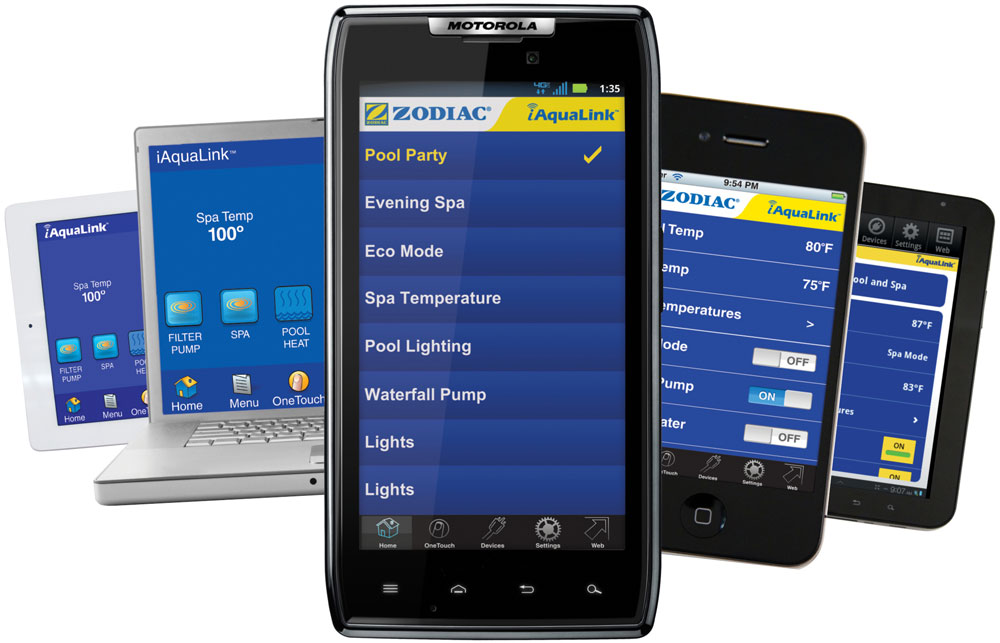A shorter version of this article by Kim Erle was published on bobvila.com earlier this month as 10 Energy-Wise Ways to Lower Your Pool Maintenance Costs.
Whether you're building a new swimming pool or retrofitting your existing pool, there are things you can do to make sure that your operating costs don't break the bank. As a bonus, most of these measures save energy and are better for the environment too. So go ahead…take the plunge! Consider these 10 strategies:
1. Install a variable speed pool pump. Retire your single speed pump in favor of an ENERGY STAR certified variable speed (VS) pool pump. According to the US EPA’s ENERGY STAR web site, on average VS pumps result in savings of over $300 annually (and potentially even more in warm climates where pools are used throughout the year or when the newest and most efficient models are installed). In fact, according to the ENERGY STAR web site, “If all pool pumps sold in the United States were ENERGY STAR certified, we would save about $113 million per year and prevent greenhouse gas emissions equivalent to those from 140,000 cars.” VS pumps are so energy efficient that many utilities offer rebates to pool owners who install them.
In 2013, Pentair's IntelliFlo VS pump was the first in the pool industry to be ENERGY STAR certified. Since then, many other have followed suit. Click here for a list of ENERGY STAR certified pool pumps.
2. Use a Pool Cover. By installing an ASTM-approved automatic pool safety cover, not only will you have a safer pool environment, but closing the safety cover when the last swimmer comes out of the pool can save up to 70% in heating costs, and will reduce as much as 50% of a pool’s evaporative water loss and 60% of pool chemical consumption according to the US Department of Energy (DOE). In fact, the DOE publishes estimates of savings by region from using a pool cover. In New York, a pool cover reduces the average cost of seasonal heating from $1,220 down to $200 for pools heated with a heat pump. For a more cost-effective solution, consider a solar bubble-type cover that can be folded and set aside when you are using the pool. The Coverstar model pictured here works well for new construction, where hidden rails and a buried housing can be part of the pool planning.
3. Plant a hedge or install a barrier to act as a wind break for the pool. Wind increases the rate of evaporation of your pool’s water. Stop the wind and you’ll stop the loss of water that you’ve already paid to heat and sanitize. Tim Rumph, of Araiys Design on Long Island, designed this deer-resistant hedge, which provides privacy and doubles as a wind break for the homeowner’s pool.
4. Upgrade your heating system. Heat the pool water using a high efficiency heater. According to the DOE, you can save $315 for every $1,000 you spend annually to heat your pool by switching from a 65% efficiency gas heater to one with 95% efficiency. For even greater energy savings and less environmental impact, consider a heat pump (particularly if you live in a warm climate) or solar hot water panels. John Tortorella, CEO of Tortorella Group, a luxury pool contractor on Long Island, designs his clients' pools with “deep heating.” Since heat rises, heat the pool from the bottom rather than at the top to avoid losing the pool heat into the air. At 95% efficiency, the Jandy Hi-E2 pool heater pictured here is the highest efficiency gas heater available.
5. Use larger pool filters. Larger filters have greater surface area for pumped water to flow through. This means that your pump can push the water through the filter at lower pressure and doesn't have to work as hard. Larger filters not only reduce the electrical draw on your pump, but may also extend the life of your pool pump. Cartridge filters like the one pictured here are the most water efficient technology, as they do not require backwashing and use a fraction of the water required for cleaning a traditional sand filter.
6. Install LED Lighting for better illumination with operating cost savings of 80% or more. And, since LED lights last up to three times as long as incandescent lights, you will save time and money on lighting maintenance. Check with your local utility for rebates when you install LED pool lights. And use this web tool by Pentair to calculate your potential savings.
7. Design the pool’s plumbing system correctly. An energy efficient pump is no good if it’s trying to push water through a pipe that is too small or is fitted with tight curves. Getting the hydraulics right will improve the efficiency of your pump, as water will be able to move effortlessly through the system. Tortorella Group's engineers carefully design their clients' pools with wide plumbing sweeps instead of tight corners, and with pipes sized to work in concert with the pool pump.
8. Change your sanitation system to one of the newer technologies - such as salt chlorine generation or UV Ozone - that requires fewer chemicals and less time for pool maintenance. Salt generators, which produce chlorine on site, virtually eliminate the need for additional chemicals. Fewer chemicals mean lower pool maintenance costs. Ozone and UV Ozone systems require considerably less supplemental chlorine than traditional chlorine-only systems. Kevin Woodhurst, President of Precision Aquascapes in Phoenix, Arizona notes that using an ozonator will extend the life of the filter’s pleats if your pool uses a cartridge filter. And, he even recommends using several of these strategies in tandem. Using a UV ozone system, like the DEL Ozone unit pictured here, along with a salt generator will extend the life of the generator's salt cell. Lower maintenance costs aren’t the only benefits of these newer technologies; users say their pools are more comfortable than traditional chlorine-only pools.
9. Consider pool automation. Use pool automation to run your pool pumps when electricity rates are lowest or to adapt your pool equipment schedules as the seasons change. Jandy's iAqualink Controller pictured here, and accessible from your mobile device, has an Energy Saving Program that automatically adjusts the pool's filtration, purification and other features for optimal energy performance.
10. Choose a high performance finish. A darker colored pool will absorb more of the sun's heat, and will reduce your heating costs. In addition, you can lower your maintenance costs by choosing a long-life pool finish. John Zita, Northeast Territory Manager for CL Industries, cautions that “the challenge with any pool finish is the substrate” used to adhere the finish to the pool. “The cement needs to be a good quality cement, which is critical to the bond of the finish.” John’s company sells pre-blended finish products with proprietary additives that fortify the cement and strengthen the overall finish. The elegant Hydrazzo Oceana Blue finish pictured here carries a lifetime warranty if properly installed and maintained.










